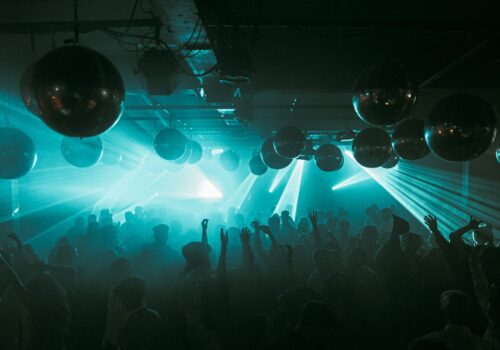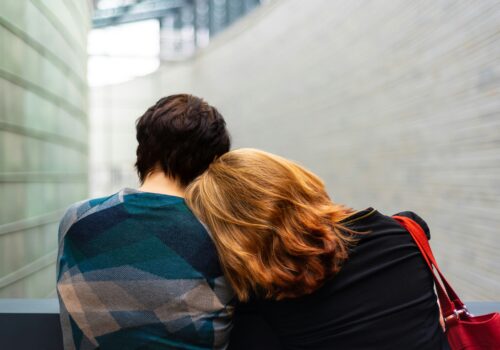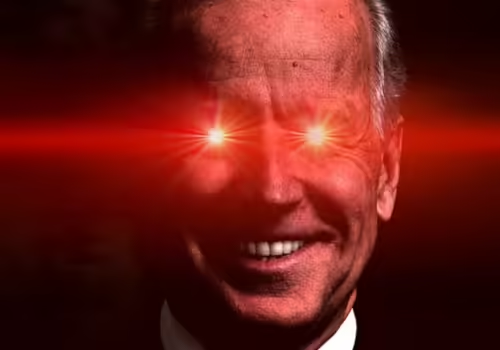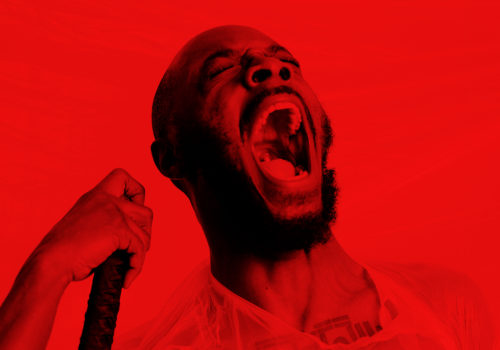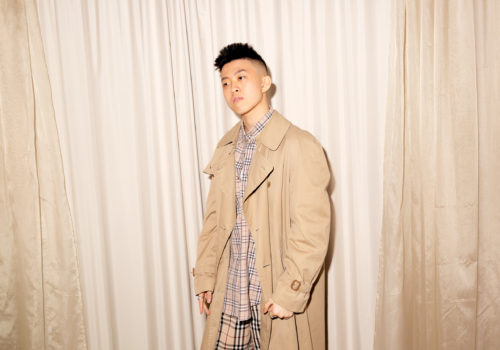The podcast born out of the strangest of times
@staselejakunskaite
By Emily Mullen
We chat to the Science Gallery at Trinity College Dublin’s Events and Community Manager Jane Gleeson about the creation of IN THESE STRANGE TIMES, and collaborators Lucas Garvey and Staselė Jakunskaitė about their involvement in the pioneering podcast
Some days stick out in your mind as one of the key dates in our global history, from 9/11 to JFK’s death, they are climactic events in our shared consciousness. A thought or a reference to the event can bring you right back to the exact place you were and how you felt when the news hit you. March 12th 2020 is now one of those days, the day that the true extent of the pandemic hit Ireland, the ripples felt over the following hours throughout the world. That same day was the launch of the Science Gallery Dublin’s first exhibition of 2020, the ironically named “Invisible” exhibition, was bound to become just that.
For Jane Gleeson, Events and Community Manager at the Science Gallery Dublin, her memory of that day is particularly poignant, she was handing the cancellation of the exhibition from home due to Covid, while she was sick with suspected Covid. While Trinity College (where the Science Gallery is based), was closing its doors, the team attempted to switch the opening online but struggled to sort the logistics out in such a short turnaround time. This logistical nightmare was only the beginning of a series of cancellations the Science Gallery Dublin had to make as the year moved on and it became abundantly clear that none of the organised events could go ahead. For the following year, “every time I went into the gallery I could just see the events wall but none of the live events happened,” Gleeson told us over the phone.
Coming from an artistic background herself Gleeson was acutely aware of the impact cancellations on this scale from events, exhibitions to projects would have on the artistic community. As a result, the Science Gallery Dublin were quick to adapt and launched the Rapid Residency Grant in April 2020. Their pilot virtual residency programme supports artists in the development of a new project or idea over the course of five weeks, lining them up with expert researchers. The Rapid Residency Grant has so far supported 18 proposals from artists, helping them work on projects that had been paused due to Covid, it was a way to “support work in progress as opposed to the realisation of a final project” Gleeson said.
On the anniversary of that fateful day March 12th 2021, the Science Gallery Dublin launched the IN THESE STRANGE TIMES podcast. The name is a nod to the seemingly ubiquitous email sign off that has taken over from the “kind regards” of the past. Much like the podcast, the signoff IN THESE STRANGE TIMES is an acknowledgement that things have been irrevocably altered through the pandemic and what once passed as routine and normal (even something as simple as goodbye in an email) is no longer. Gleeson reached out to RTE 2FM DJ Tara Stewart to ask her to be the voice on this pioneering podcast as she felt Tara could unpick a wide range of themes from intimacy to burnout and health innovation to vaccine inequity in engaging and accessible ways. A number of other Creatives have been involved in the podcast, with Lucas Garvey contributing to each podcast with a FutureCast speculation segment, that gives a satirical stab at everything from news updates to gallery guides, and a series of conceptual illustrations for each podcast created by illustrator Staselė Jakunskaitė.
The weighty task of finding a fresh take on the pandemic was a challenge for the Science Gallery Dublin team, despite being privy to discussions on Covid since the start. Gleeson told us that as early as January 30th, weeks before Covid hit Ireland, the Paccar Theater was packed out with a talk on Covid, “we had people on stage experts like Dr. Cillian De Gascun (Chair of the NPHET Coronavirus Expert Advisory Group) not wearing masks debating whether masks even worked. It was a hot topic of discussion we didn’t realise it would hit Ireland and the world the way that it actually did, although the experts on stage were predicting that it might,” Gleeson said.
While being in the midst of the Covid conversation from so early on, did give the Science Gallery Dublin a unique slant on the coverage, it was not necessarily a silver bullet solution, in how to cover the pandemic. Gleeson explained, “as a team, we are working remotely and in isolation, so we are lacking the old working habits that we would have once had in terms of brainstorming sessions and conversations around these types of projects”.
With an onslaught of coverage and chatter around the pandemic, the Science Gallery Dublin were keen to have a unique take on that conversation, through their unique vantage point at the crosssection of creativity and science they have managed this. IN THESE STRANGE TIMES is a figurative account of the pandemic and it has managed to cultivate a remembrance of what has and what is currently happening in Ireland during the pandemic.
“We are documenting a really important time for humanity, this is a horrible situation for us to be in which will go down in history books. But being able to document something like that is really fascinating.”
Jane Gleeson, Events and Community Manager at the Science Gallery Dublin
Reflecting on the human experience during the pandemic has been a key thread throughout the podcast series, but also how humans have responded to challenges and pushed for innovations too. This crossover is symptomatic of a lot of the Science Gallery Dublin’s work which operates in the spaces between creativity and science. The approach that scientists and artists take when looking at problems is not that dissimilar, both fields “have quite a lot of crossovers and parallels” there’s a fine thread between them, the first being that they look at problems and “create an innovative solution to address it”. For Gleeson it is this intersection that makes the podcast unusual “we were trying to take a more creative and lateral approach rather than looking at it as a news piece.”
“People were working in isolation as soon as the pandemic hit and my whole focus as an event manager is bringing people together but we aren’t allowed to bring people together anymore, so the exhibit is a nice way for people to get involved in art and culture but doing it in their own time and their own space. Being able to experience an art piece in a world where we haven’t really been able to,” Gleeson said.
The human experience also helped to form the format of the IN THESE STRANGE TIMES. With Gleeson explaining that she was acutely aware of the lethargy some are feeling for online events, the Science Gallery Dublin team looked for something different, “online events are sometimes lacking in something, they are lacking in the human connection, we’ve obviously lost that because we can’t have it anymore it’s pretty much illegal. So with the podcast, it’s about connecting with people in a more human way. Even though it is still virtual and you do it in your own time, rather than doing a one-off panel discussion on a screen when people are completely sick of screens, you can have a look at the different topics being addressed, put on your headphones go on a walk and get outside rather than being stuck behind a screen, which was something that I was getting very sick of at the time,” Gleeson said.
Breaking up the podcast is a FutureCast speculation segment from Berlin-based artist Lucas Garvey. It’s a light, humorous piece that covers the theme of the specific podcast but in a futuristic and speculative way. For Gleeson, the segment brings some light relief for some of the podcast topics which can be a bit “niche at times”. Created organically, Garvey is just given the general theme of the topic and tasked with creating a speculative segment on the theme. Gleeson has said it’s important for the creation of Garvey’s piece that he is unaware of the speakers or the specifics of their conversations, and indeed this has yielded results, as Garvey’s FutureCast speculations are refreshingly authentic and far removed from the discourse that it surrounds.
Audio is a departure from Garvey’s traditional artistic output, but his work on the social_on_social project, a research project that features and interviews the creators of social and speculative design projects, caught the organiser’s eye. This curiosity has lent itself well to the creation of “ridiculous scenarios” and “outrageous setups” that Garvey produces through the 3-5 minute segments. Inspiration for the FutureCast scripts has come from watching the likes of Monty Python, Police Squad! and The Naked Gun, echos of which can be heard in the old-style set up of the segments and narrative pitter-patter. Having never worked with audio before, it “was quite refreshing” to work in that medium despite some logistical hurdles that were ironed out with the help of Factory Berlin where he does his residency, “where we have a full recording studio and a sound engineer at our disposal,” Garvey said.
Humour is something that is key to Garvey’s approach mainly down to the fact that “all creative projects come from a very personal space and personal experience”. Using satire and humour as a tool to engage a larger swathe of people in the hope that “somewhere down the line social betterment will be the result” has been Garvey’s goals, his bio reads that he is a “social and speculative designer”. But this is something that has been challenging him, using humour as a tool for social betterment but also being realistic about its capabilities and limitations, “I think a lot of designers can be quite optimistic and idealistic and think that it has a lot more impact than it actually does I think it’s important to be realistic as well,” he said. This notion coupled with the creation of futuristic segments while going through a pandemic has been challenging for Garvey who said that for some creatives “inspiration is at an all-time low”. The nature of creativity has changed dramatically, and “the creative block that you experience at a time like this is unfathomable, being surrounded by the same four walls and seeing the same handful of people is quite suffocating, it’s hard.”
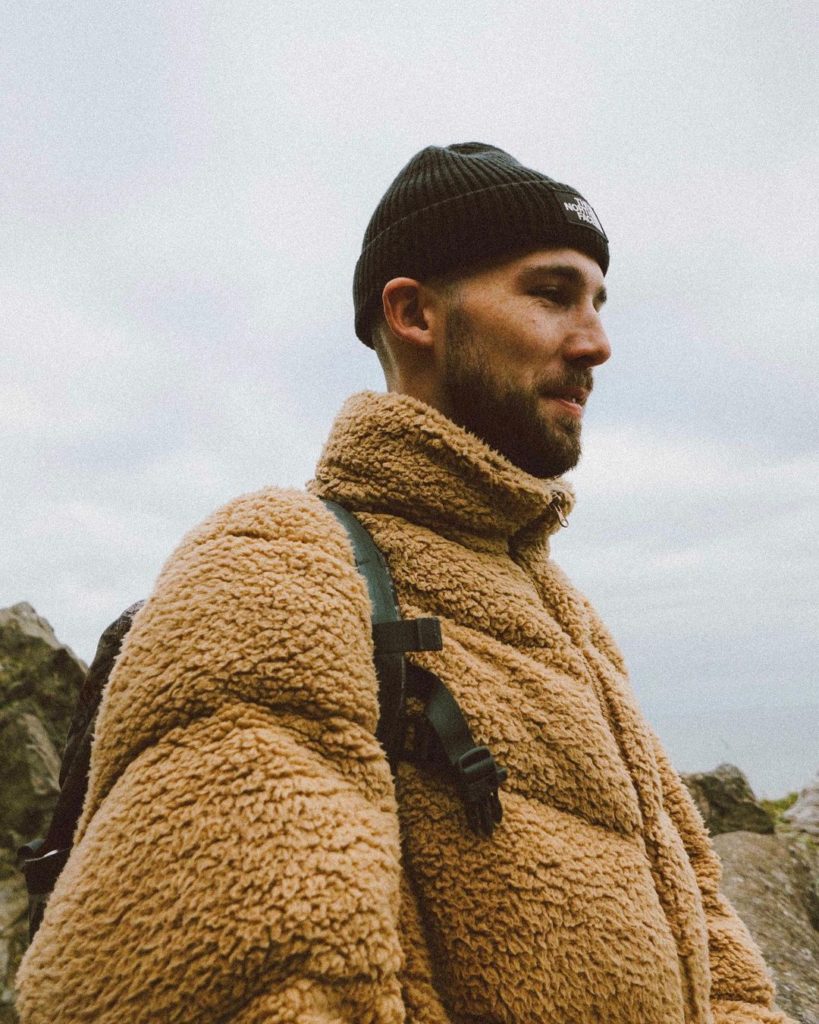
Jakunskaitė created the cover art for IN THESE STRANGE TIMES podcast, a series of 10 pieces that centre around isolation. Created through scanned risograph and screen-print textures in Photoshop and Procreate, Jakunskaitė created a series of analogue-like illustrations for the series. Graphical and flat, there are echoes of anatomical science in the sparsity and deftness of her hand. The series was a way for Jakunskaitė to document the lockdown and create a “reflection of current times and life during lockdown”. With an unflinching look at some of the gnarlier aspects of the pandemic, like misinformation and global politics. Jakunskaitė told us it was important for her work to engage with this aspect of the pandemic, “the recent spyke of conspiracy theories just emphasized the old problem, on the other hand there are many examples throughout the history of misinformation on mainstream channels [sic],” she told us.
“I believe we don’t really know anything or at least everything about anything and in this situation of no one truth it seems like you can choose your own and feel right about it, which also very strange,” she added.
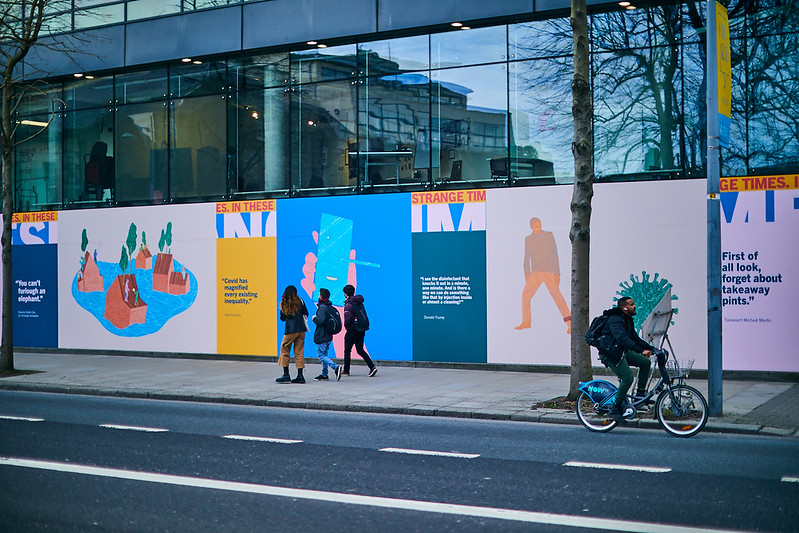
Much like Garvey’s reflection of humour in his segments, Jakunskaitė drew on her own experiences of isolation during lockdown for her series. Lockdown and self-isolation were the dominating topics in the series, but this manner of living was not dissimilar from how Jakunskaitė has lived over the past few years, motherhood she says “can feel as self-isolation in a way”. As a result, Jakunskaitė did not view this new way of living as a negative, “I love socializing but really enjoy and found peace with loneliness as well, also these years of limited social interactions really helped me focus on listening to audiobooks and my work as an artist,” she said. For her series Jakunskaitė wanted to show “self-isolation as not necessarily negative. I understand it may have been a very hard time for lots of people, but for many, I believe, last year was the great opportunity to stop and reevaluate everything – focus on things we didn’t have time before and spend more time with family or, most important, with ourselves.”
This was as far the largest series I worked on and the number of illustrations was definitely challenging. Being chosen to do this work is great recognition for me and I am truly proud and grateful to all the team for the result. Any initiatives where creatives are involved are important for the creatives, the more the better!
Stasele Jakunskaitė, illustrator
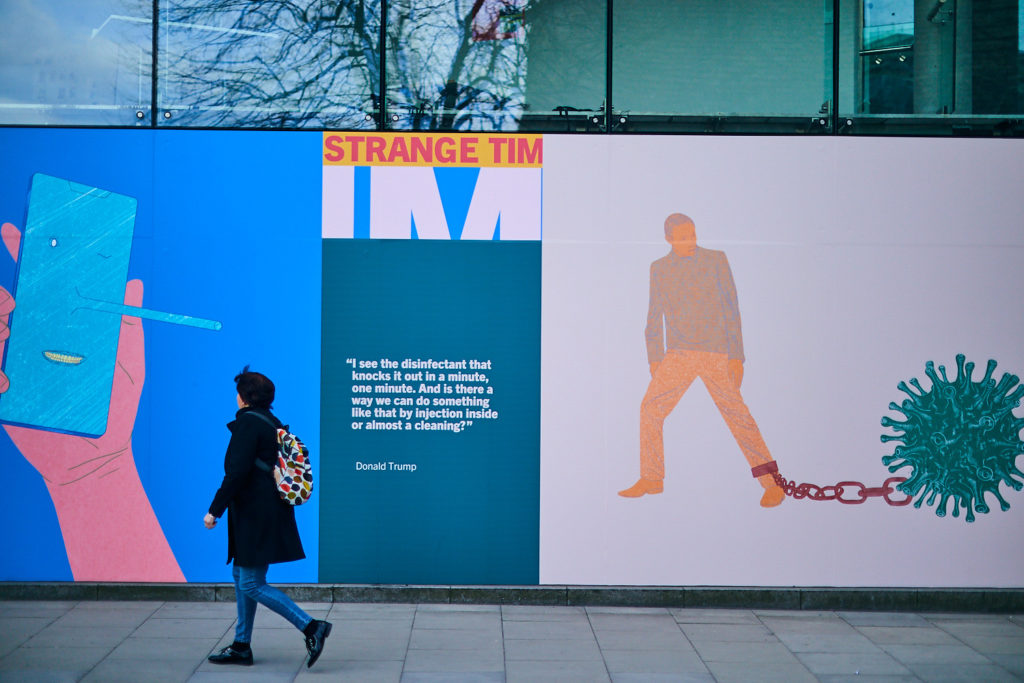
A unique take on the global pandemic, Gleeson is keen to show some of the human resilience experienced and innovation demonstrated during this time period. “As much as the pandemic has been an absolutely awful and terrible thing it has unearthed some positives in the sense that we’ve highlight inequities especially across things like housing, but it’s also advanced certain things like healthcare, installing things like the Violet robot into hospital spaces, that is something that would have taken I would imagine years to be implemented by the health service in Ireland but in response to Covid it was quickly taken up,” Gleeson said. “It’s had a lot of benefits that have advanced humanity in so many ways, so it’s not looking at Covid as a huge negative all the time but seeing the positives that have come out of it as well,” she added. So IN THESE STRANGE TIMES is a double play, an acknowledgement of what’s happened and a signal towards the future, just like all the potential those tentative email signoffs hold.
New episodes of IN THESE STRANGE TIMES are released every two weeks, with the first six already available on all podcast platforms, for more information visit the Science Gallery Dublin website here.

